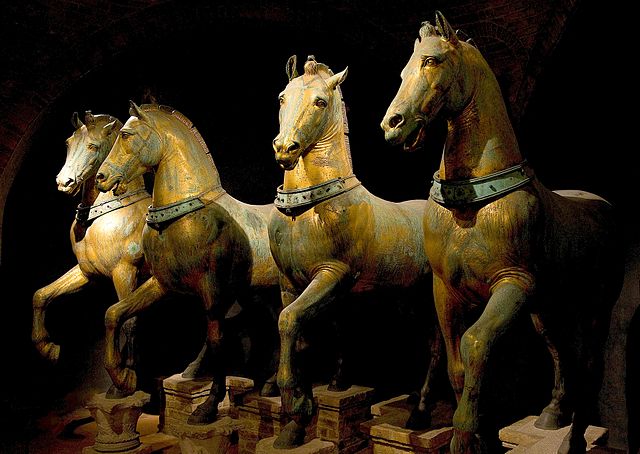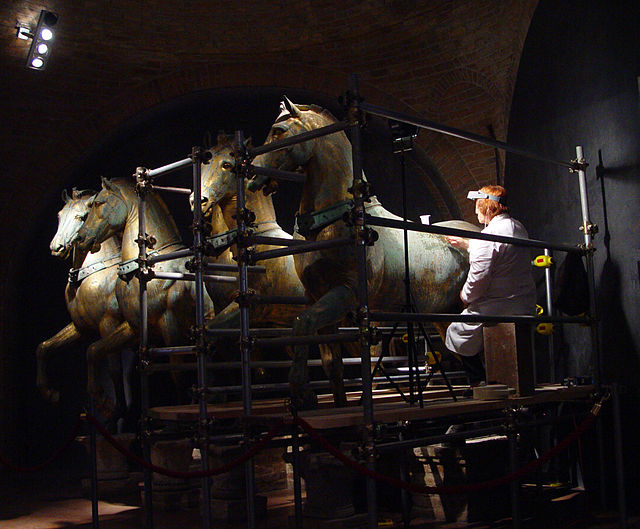The Horses of Saint Mark, also known as the Triumphal Quadriga or Horses of the Hippodrome of Constantinople, is a set of bronze statues of four horses, originally part of a monument depicting a quadriga. The horses were placed on the facade, on the loggia above the porch, of St Mark's Basilica in Venice, northern Italy, after the sack and looting of Constantinople in 1204. They remained there until looted by Napoleon in 1797 but were returned in 1815. The sculptures have been removed from the facade and placed in the interior of St Mark's for conservation purposes, with replicas in their position on the loggia.
The original Horses inside the St Mark's Basilica
The replica Horses of Saint Mark
The Return of the Horses of San Marco by Vincenzo Chilone, depicting the return of the horses in 1815.
Conservation-restoration of the Horses of Saint Mark
A quadriga is a car or chariot drawn by four horses abreast and favoured for chariot racing in classical antiquity and the Roman Empire. The word derives from the Latin quadrigae, a contraction of quadriiugae, from quadri-: four, and iugum: yoke. In Latin the word quadrigae is almost always used in the plural and usually refers to the team of four horses rather than the chariot they pull. In Greek, a four-horse chariot was known as τέθριππον téthrippon.
The Horses of Saint Mark in Venice
Marcus Aurelius celebrating his Roman triumph in 176 AD over the enemies of the Marcomannic Wars, from his now destroyed triumphal arch in Rome, Capitoline Museums, 176–180 AD
Genesis 41:42–43: "And Pharaoh … made him to ride in the second chariot which he had; and they cried before him, bow the knee: and he made him ruler over all the land of Egypt." Miniature from the Paris Gregory, a 9th-century Greek manuscript, Bibliothèque nationale de France
Helios in his chariot, early 4th century BC, Athena's temple, Ilion







